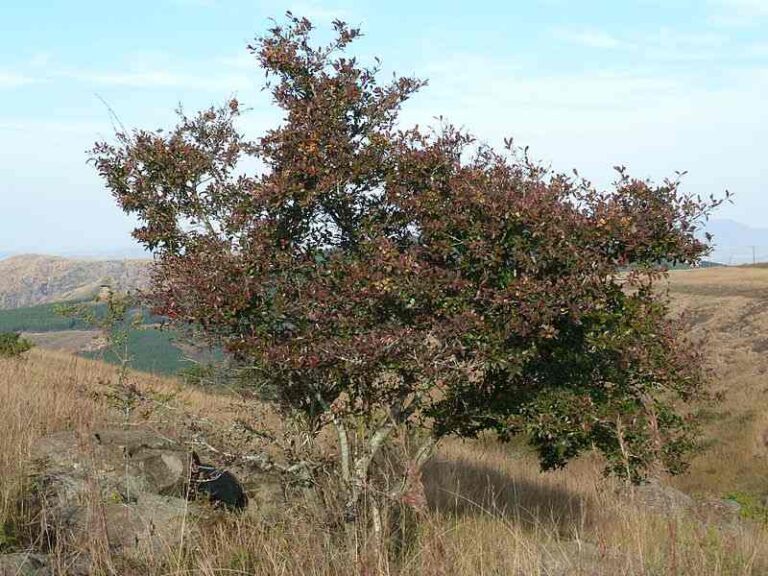Process of Bioremediation: 3 Steps Explained
The process of bioremediation comprises of; biologic facilitation, pollutant decomposition, and medium detoxification.
This article discusses the process of bioremediation, as follows;
1). Biologic Facilitation (as part of the Process of Bioremediation)
Biologic facilitation is an essential and prerequisite step in the process of bioremediation.
It has to do with all mechanisms that help to establish the conditions that are necessary for effective biological remediation to occur.
As an early step in the bioremediation process, biologic facilitation is a preparatory step, that must occur to set the stage for the remainder of the remediation process, by meeting all major requirements.
The requirements of bioremediation are; availability of microbes and nutrients; optimal soil moisture, temperature, pH and oxygen, among others [3].
Biologic facilitation may occur naturally or artificially, depending on the techniques and types of bioremediation that are being utilized.
For intrinsic bioremediation and its techniques, the natural ecosystem is generally responsible for biologic facilitation, which will occur as a result of the natural trends and processes of nutrient recycling, biomass production, bioenergy consumption, and organic reproduction.
Extrinsic bioremediation on the other hand, is mostly dependent on human intervention to facilitate biologic processes that lead to restoration of the environment.
Under natural conditions, biologic facilitation occurs in the form of energy pyramid sustenance, nutrient cycling, and natural regeneration in the form of species population growth or spontaneous reforestation.
When biologic facilitation is artificial or human-induced, it occurs in the form of bioremediation techniques like bioaugmentation and biostimulation, which are designed to provide external support in order to speed up the rate at which biological treatment occurs.
Bioaugmentation in bioremediation is simply the addition of microbes to a degraded medium, to supplement or represent the native species, thereby boosting microbial population size and biodiversity.
Biostimulation in bioremediation is the deliberate establishment of conditions to support the growth, activity and reproduction of microorganisms that are needed for pollutant-breakdown.
Ex situ bioremediation may require bioreactors to provide well-controlled and engineered conditions/physicochemical parameters to facilitate pollutant biodegradation.
2). Pollutant Decomposition
Pollutant decomposition is arguably the most important outcome of bioremediation, for all cases involving the treatment of sites and media that have been degraded as a result of pollution.
It is also the primary outcome of biological facilitation tor all such cases.
Also known as pollutant biodegradation, it is simply the biochemical breakdown of unwanted and/or harmful materials in a site as a result of the metabolic activities of living organisms, so that these materials are converted to less-harmful products [4].
Environmental pollutants that are removed through the bioremediation process are those which are susceptible to biochemical breakdown and conversion, including metallic sulfides and hydrocarbons.
The fate of pollutants during bioremediation can be understood by observing what occurs during the pollutant-decomposition stage, to ultimately involve changes in chemical composition, and degradation to yield carbon dioxide and water, among other materials that have no notable, negative environmental impacts.
Pollutant decomposition is important to determine the overall trend of any given bioremediation project or activity, in terms of complexity, difficulty, suitable approach, and effectiveness of treatment.
These criteria are directly influenced by characteristics of the pollutants such as their persistence, mobility and stability; as well as by the microorganisms that are present.
3). Medium Detoxification (as part of the Process of Bioremediation)
Detoxification is the final, expected outcome as well as the aim of bioremediation in general.
It involves a reduction in the risk of harm to the ecosystem and its habitats, posed by environmental degradation.
Depending on the approach used, any of various tools and techniques can be used in bioremedial detoxification, including microbes, chemicals, reactions, and physical measures/equipment.
Chemicals used in bioremediation are mainly biological enzymes like dehydrogenases, lipases, dehalogenases, proteases, hydrolases, laccases and cytochrome P450s [1]. These are mainly responsible for facilitating the chemical reactions that enable bioremediation to occur.
Chemical reactions involved in bioremediation are mainly oxidation and reduction (redox) which occur co-dependently to enable electron-transfer and pollutant breakdown occur.
Bacteria used for bioremediation include; Enterobacter, Acinetobacter, Alcaligens, Achromobacter, Bacillus, Pseudomonas, Alteromonas and Flavobacterium [2].
An example of detoxification is the use of lichens, fungi and bacteria species to reduce the toxicity and concentration of asbestos in the environment [5].
Problems in bioremediation include persistence of pollutants, non-biodegradable characteristics, complexity of degradation, cost, and difficulty involved in treating sensitive environments [6].

Conclusion
The process of bioremediation comprises of;
1. Biologic Facilitation
2. Pollutant Decomposition
3. Medium Detoxification
References
1). Bhandari, S.; Poudel, D. K.; Marahatha, R.; Dawadi, S.; Khadavat, K.; Phuval, S.; Shrestha, S.; Gaire, S.; Basnet, K.; Khadka, U.; Parajuli, N. (2021). "Microbial Enzymes Used in Bioremediation." Journal of Chemistry 2021(4):1-17. Available at: https://doi.org/10.1155/2021/8849512. (Accessed 7 January 2023).
2). Dell' Anno, F.; Rastelli, E.; Sansone, C.; Brunet, C.; Ianora, A.; Dell' Anno, A. (2021). "Bacteria, Fungi and Microalgae for the Bioremediation of Marine Sediments Contaminated by Petroleum Hydrocarbons in the Omics Era." Microorganisms 9(8):1695. Available at: https://doi.org/10.3390/microorganisms9081695. (Accessed 7 January 2023).
3). Ogbeh, G. O.; Tsokar, T. O.; Salifu, E. (2018). "Optimization of nutrients requirements for bioremediation of spent-engine oil contaminated soils." Environmental Engineering Research 24(3). Available at: https://doi.org/10.4491/eer.2018.237. (Accessed 7 January 2023).
4). Sharma, I. (2019). "Bioremediation Techniques for Polluted Environment: Concept, Advantages, Limitations, and Prospects." In M. A. Murillo-Tovar, H. Saldarriaga-Noreña, & A. Saeid (Eds.), Trace Metals in the Environment - New Approaches and Recent Advances. IntechOpen. Available at: https://doi.org/10.5772/intechopen.90453. (Accessed 7 January 2023).
5). Thirumoorty, G.; Divyeksha, H. B.; Vasantha, V. I.; Praveen, N. N. (2022). "Bioremediation and Detoxification of Asbestos from Soil." Advances in Bioremediation and Phytoremediation for Sustainable Soil Management (pp.211-228). Available at: https://doi.org/10.1007/978-3-030-89984-4_14. (Accessed 7 January 2023).
6). Vishwakarma, G. S.; Bhattachariee, G.; Gohil, N.; Singh, V. (2020). "Current status, challenges and future of bioremediation." Bioremediation of Pollutants (pp.403-415). Available at: https://doi.org/10.1016/B978-0-12-819025-8.00020-X. (Accessed 7 January 2023).




